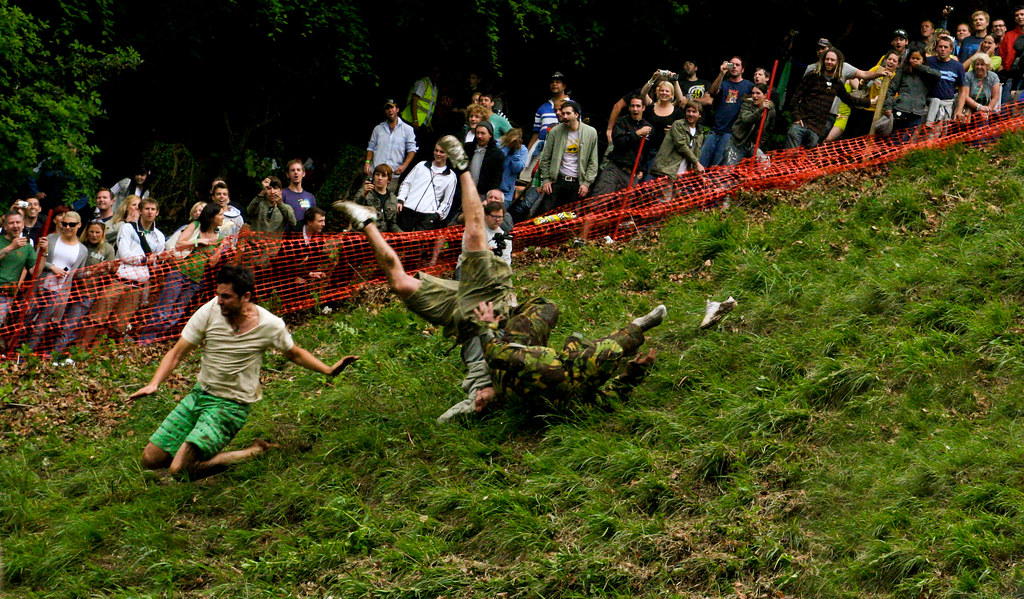It seems as each summer passes there is an increase in the number of shark attacks being reported throughout the world. Some would believe this must mean there is an increase in the number of sharks attacking people in the water. Figuratively speaking, an increase in the population could result in an increase in attacks and more people to damage. Realistically, it means our shark attack reporting system has become more efficient. So how big are the risks of shark attacks when swimming?

Your odds of being attacked by a shark in the water are quite small. More people are injured and killed on land while driving to and from the beach than by sharks in the water. Shark attack injuries are also less common than injuries afflicted on the beach, such as spinal cord damage, jellyfish stings, dehydration, and sunburn. More people require sutures as a result of sea shell lacerations on their feet than shark bites.
You have a better chance of being hit by lightning, dying from a bee sting or being hit on the head by a falling coconut, than you do of being attacked by a shark.
Most shark attacks occur quite close to shore in water 6-10 feet deep, on a sandbar or between sandbars.

These are areas sharks are known to feed in and they may get caught in low tide. Swimmers who are splashing and playing in these areas may be mistaken as prey. Underwater locations such as drop-offs and walls are also likely attack sites as natural food sources also congregate in these areas. When a shark has attacked a diver, the shark has most likely mistaken the diver as prey or has been unexpectedly startled by a diver.
There are two types of attacks that usually involve divers in deeper waters; “bump and bite” attacks and “sneak” attacks. These types of attacks are less common than surface attacks but result in greater injuries and the most fatalities. “Bump and bite” attacks are characterized by the shark initially circling and often bumping the victim prior to the actual attack. “Sneak” attacks are characterized by the strike occurring without warning. Repeat attempts to bite are not uncommon and multiple or sustained bites are normal for these types of attacks making these injuries usually quite severe, frequently resulting in death. Rather than being a case of mistaken identity, these attacks most likely occur as a result of feeding or antagonistic behaviour.
If you are a diver, here are a few tips to help you avoid shark attacks during your dive:
• Swim in a group. Sharks are less likely to attack a group of divers and are more likely to attack a lone diver.

Keep in mind you should at the very least, have a dive buddy with you during all dives.
• Avoid the water at night, dawn, or dusk. Sharks hunt at night. If you love night diving, dive with a group and make sure you have a dive lamp.
• Do not go in the water if you are bleeding. If you start to bleed while scuba diving, attempt to stop the flow of blood as soon as possible. Sharks have an incredibly sensitive olfactory system and can smell and taste blood and other bodily fluids and trace the scent back to its source. Menstrual blood may also attract sharks, but there is no indication of increased attacks on menstruating women. Many women dive safely while menstruating and until controlled tests involving non-menstruating and menstruating women occur there is no definitive or scientifically proven data that states women are at more risk of shark attack during menstruation.
• Do not wear shiny jewellery. Shiny jewellery may look like small fish to a shark.

• If you see a shark during a scuba dive, stay calm, stay quiet, and stay where you are. Most sharks are merely curious and will leave on their own. If a shark begins to get too interested in you and is moving closer and closer, it is safest to leave the water. Swim quickly and smoothly, watching the shark the entire time and keeping your dive buddy within arm’s reach.



